Introducing Arabic– Learn Arabic Language for Beginners by Michaek Mumisa
Introducing Arabic– Learn Arabic Language for Beginners by Michaek Mumisa
Publisher:
Goodwords
Author:
Michaek Mumisa
Language:
English
Binding:
S/C
Pages: 163
Size: 17x21cm
Couldn't load pickup availability
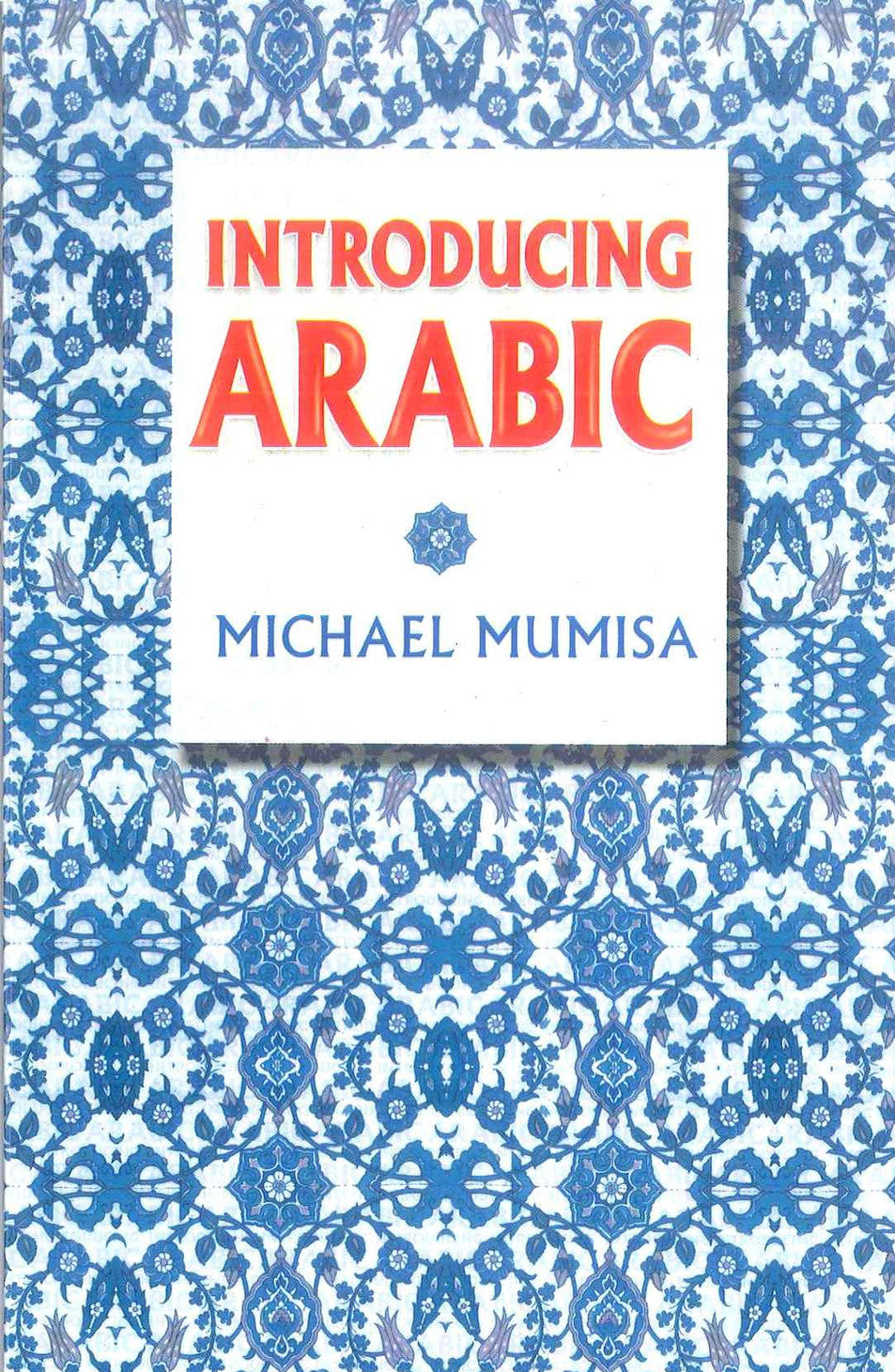
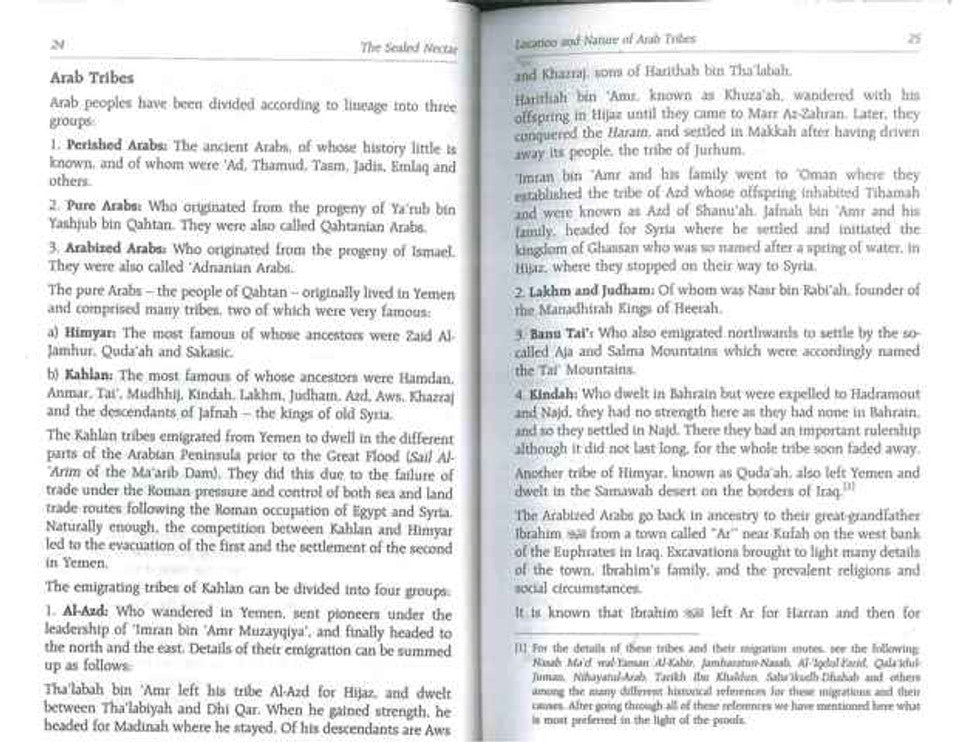
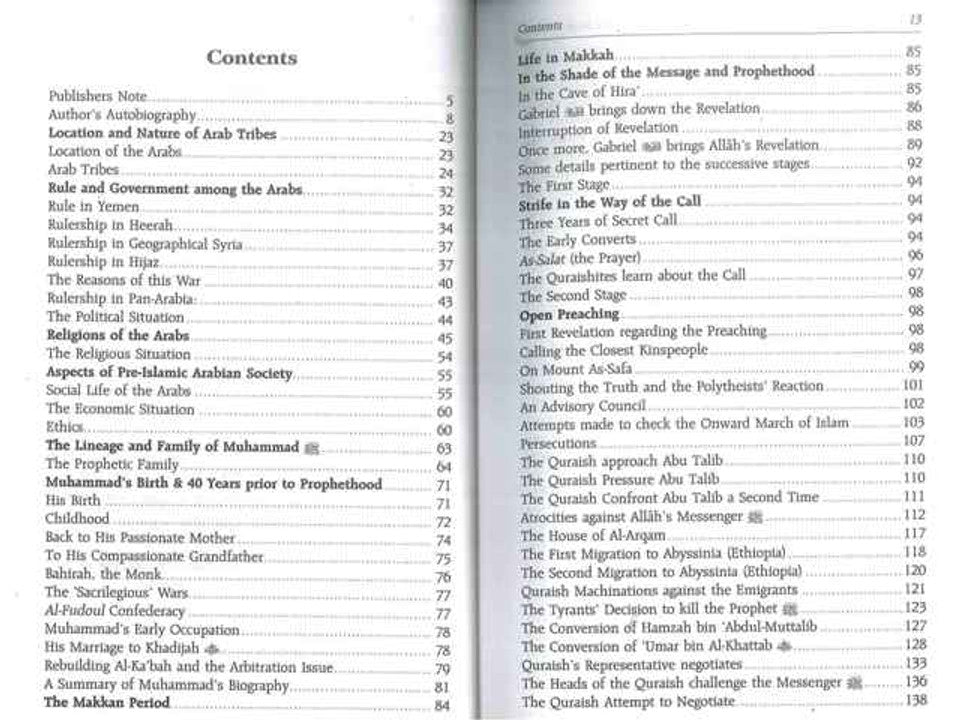
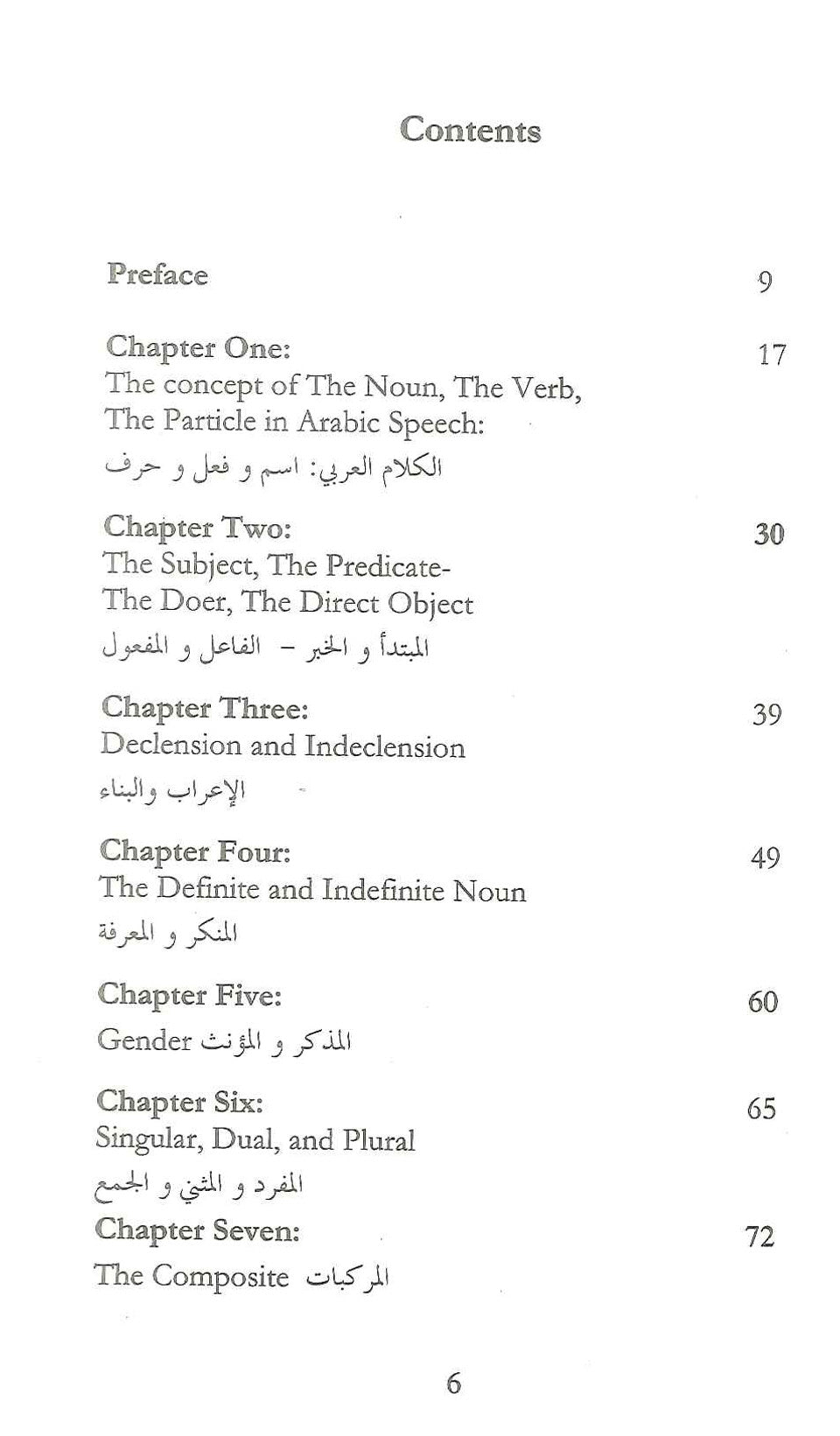
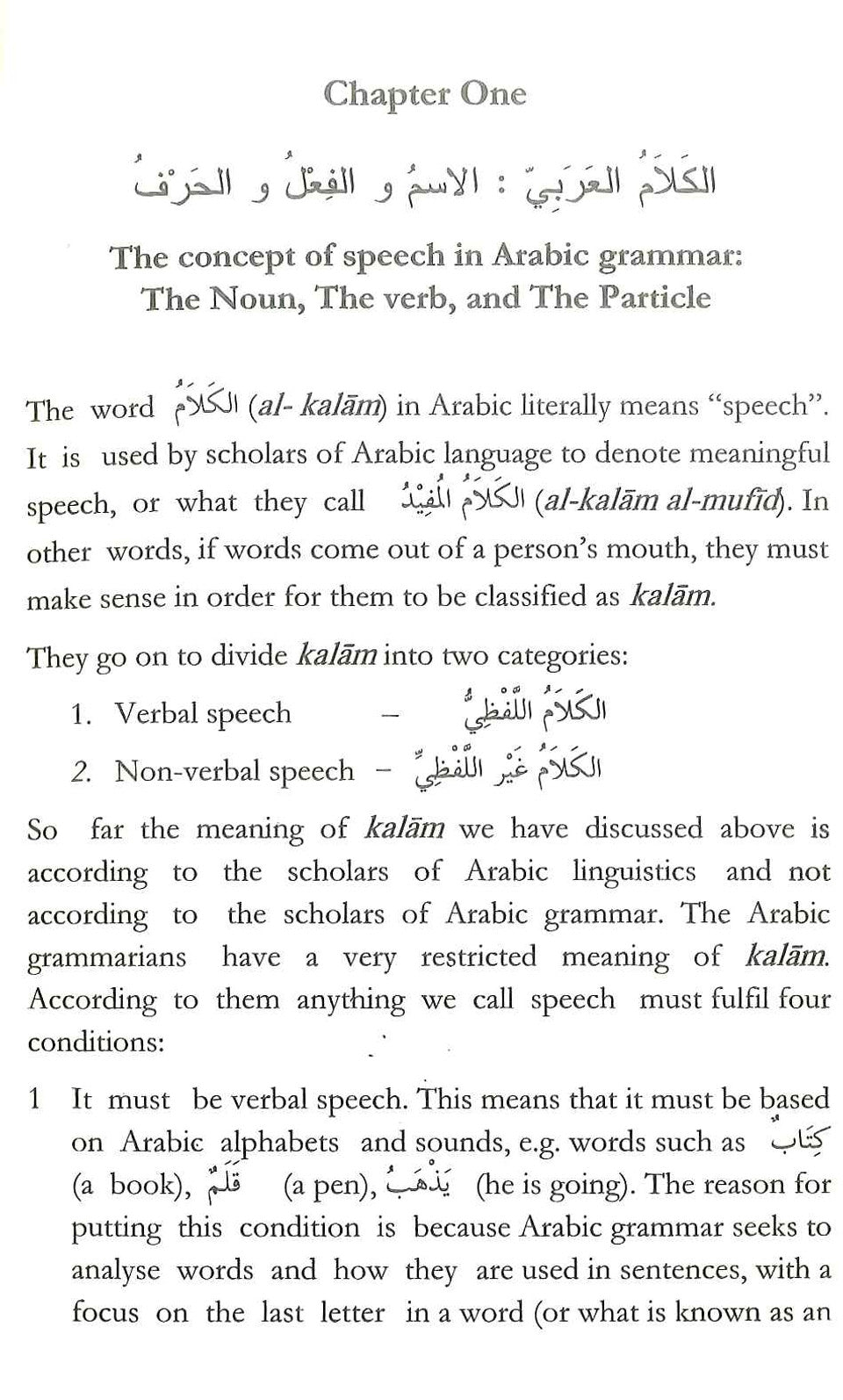
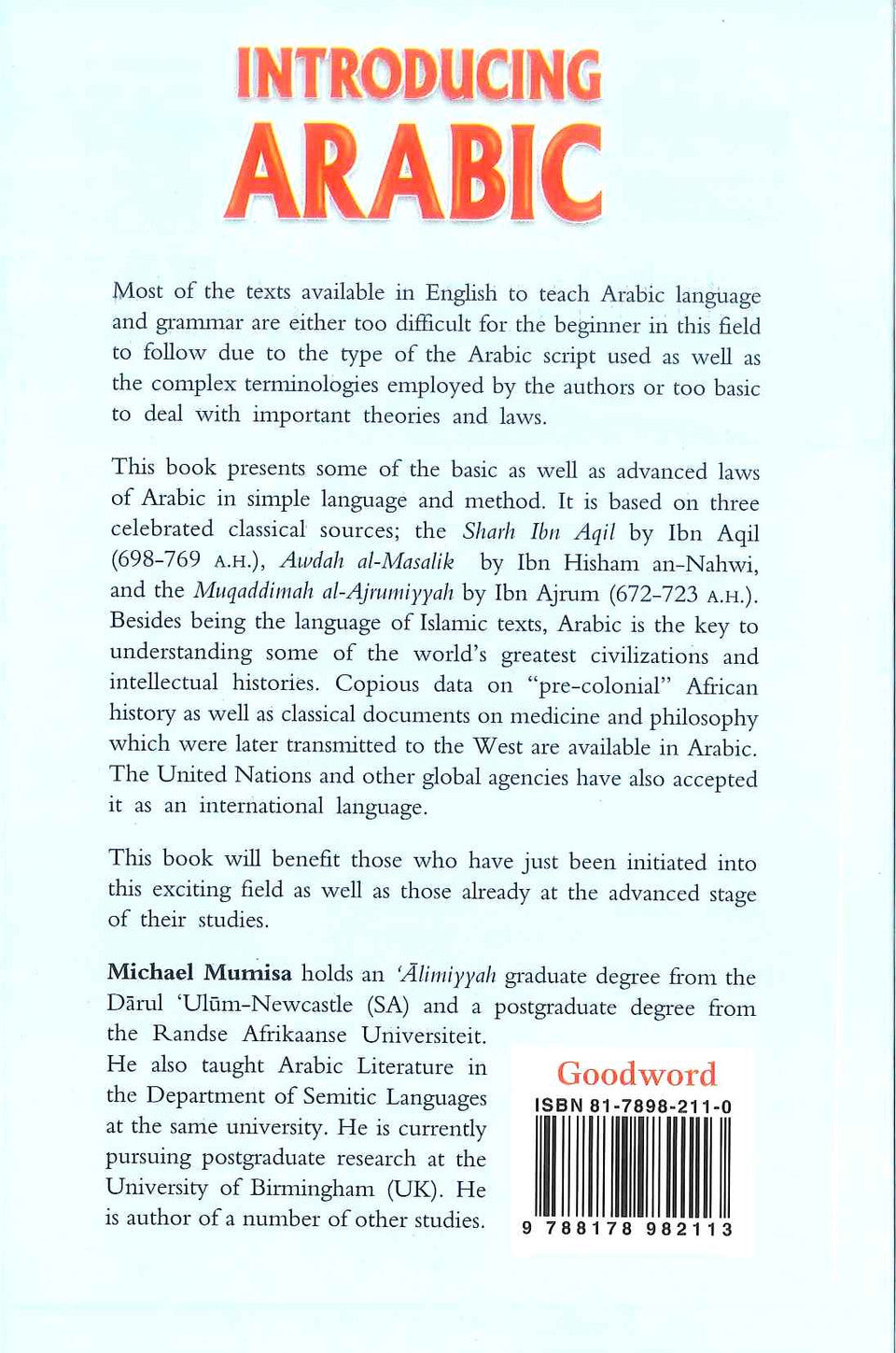
Collapsible content
Description of Book
Introducing Arabic– Learn Arabic Language for Beginners by Michaek Mumisa
Darussalam’s Introducing Arabic is an easy-to-follow book designed for beginners who want to learn the Arabic language. Covering letters, pronunciation, and basic grammar, it serves as an excellent resource for students, teachers, and self-learners.
From Author:
Publisher
Goodwords
Author
- Michaek Mumisa
Sample Pages - Content
PAGE NO :1
INTRODUCING
ARABIC
MICHAEL MUMISA
PAGE NO :2
Contents
Publishers Note
Author's Autobiography..
Location and Nature of Arab Tribes
Location of the Arabs
Arab Tribes..
Rule and Government among the Arabs.
Rule in Yemen
Contente
Life in Makkah
In the Shade of the Message and Prophethood. Is the Cave of Hira
Gabriel brings down the Revelation. Interruption of Revelation....
Once more. Gabriel was brings Allah's Revelation. Some details pertinent to the successive stages. The First Stage...
Strife in the Way of the Call.
Rulership in Heerah.
Three Years of Secret Call
Rulership in Geographical Syria.
The Early Converts,
Rulership in Hijaz...
The Reasons of this War
As Salat (the Prayer).
The Quraishites learn about the Call
Rulership in Pan-Arabia:
The Second Stage...
The Political Situation,
Open Preaching
Religions of the Arabs.
First Revelation regarding the Preaching
The Religious Situation
Calling the Closest Kinspeople.
Aspects of Pre-Islamic Arabian Society
On Mount As-Safa.
Social Life of the Arabs.
Shouting the Truth and the Polytheists' Reaction
The Economic Situation
An Advisory Council
Ethics
Attempts made to check the Onward March of Islam
The Lineage and Family of Muhammad
Persecutions
The Prophetic Family
The Quraish approach Abu Talib.
Muhammad's Birth & 40 Years prior to Prophethood.
The Quraish Pressure Abu Talib
His Birth
Childhood
The Quraish Confront Abu Talib a Second Time. Atrocities against Allah's Messenger 8
Back to His Passionate Mother
The House of Al-Argam
To His Compassionate Grandfather..
Bahirah, the Monk,
The Sacrilegious Wars
Al-Fudoul Confederacy.
Muhammad's Early Occupation..
His Marriage to Khadijah
Rebuilding Al-Ka'bah and the Arbitration Issue..
A Summary of Muhammad's Biography.
The Makkan Period
REFERRE
The First Migration to Abyssinia (Ethiopia). The Second Migration to Abyssinia (Ethiopia). Quraish Machinations against the Emigrants. The Tyrants' Decision to kill the Prophet
The Conversion of Hamzah bin Abdul-Muttalib. The Conversion of 'Umar bin Al-Khattab.
Quraish's Representative negotiates.
The Heads of the Quraish challenge the Messenger: The Quraish Attempt to Negotiate.
PAGE NO:3
Arab Tribes
The Sealed Nectar
Arab peoples have been divided according to lineage toto three groups
1. Perished Arabs: The ancient Arabs, of whose history little is known, and of whom were 'Ad. Thamud, Taam, Jadis. Emlaq and others.
2. Pure Arabs: Who originated from the progeny of Ya'rub bin Yashjub bin Qahtan. They were also called Qahtanian Arabs. 3. Arabized Arabs: Who originated from the progeny of Ismael. They were also called 'Adnanian Arabs.
The pure Arabs- the people of Qahtan-originally lived in Yemen and comprised many tribes, two of which were very famous:
a) Himyan The most famous of whose ancestors were Zaid Al- Jamhur. Quda'ah and Sakasic.
b) Kahlan: The most famous of whose ancestors were Hamdan. Anmar. Tat. Mudhhij. Kindah. Lakhm, Judham. Azd. Aws. Khazraj and the descendants of Jafnah- the kings of old Synta The Kahlan tribes emigrated from Yemen to dwell in the different parts of the Arabian Peninsula prior to the Great Flood (Sail Al- Arim of the Ma'arib Dam). They did this due to the failure of trade under the Roman pressure and control of both sea and land trade routes following the Roman occupation of Egypt and Syrta Naturally enough, the competition between Kahlan and Himyar led to the evacuation of the first and the settlement of the second
in Yemen
The emigrating tribes of Kahlan can be divided into four groups. 1. Al-Azd: Who wandered in Yemen, sent pioneers under the leadership of Imran bin Amr Muzayqiya", and finally headed to the north and the east. Details of their emigration can be summed up as follows
Tha'labah bin Amr left his tribe Al-Azd for Hijaz, and dwelt between Tha'labiyah and Dhi Qar. When he gained strength, he headed for Madinah where he stayed. Of his descendants are Aws
Lactic and Nature of Arab Tries
and Kharraj, sons of Hanthah bin Tha'labah.
Harithiah bin 'Ams, known as Khuza'ah, wandered with his offspring in Hijaz until they came to Marr Az-Zahran. Later, they conquered the Haram, and settled in Makkah after having driven away its people, the tribe of Jurhum.
Imran bin Amr and his family went to Oman where they established the tribe of And whose offspring inhabited Tihamah. and were known as Azd of Shanu'ah. Jainah bin Amr and his family. headed for Syria where he settled and initiated the langdom of Ghassan who was so named after a spring of water. In Haz. where they stopped on their way to Syria.
2. Lakhm and Judham: Of whom was Nasr bin Rabi'ah, founder of the Manadhirah Kings of Heerah.
3. Banu Tai's Who also emigrated nortliwands to settle by the so- called Aja and Salma Mountains which were accordingly named the Tal Mountains.
4. Kindah: Who dwelt in Bahrain but were expelled to Hadramout and Najd, they had no strength here as they had none in Bahrain and so they settled in Najd. There they had an important rulership although it did not last long, for the whole tribe soon faded away. Another tribe of Himyar, known as Quda'ah, also left Yemen and dwelt in the Samawah desert on the borders of Iraq
The Arabized Arabs go back in ancestry to their great-grandfather Ibrahim sa from a town called "Ar" near Kufah on the west bank of the Euphrates in Iraq. Excavations brought to light many details of the town. Ibrahim's family, and the prevalent religions and social circumstances.
It is known that Ibrahimsa left Ar for Harran and then for
I For the details of these tribes and their migation mutes, ter the following Nash Mad wal Yaman Al-Kabir Jambaston-Nash Agdal Farid Qala Juma Nihayatalab Takh Khulden Sahu kudh Dhahab and others among the many different hitonical references for these nigrations and their nes After going through all of these references we have mentioned here what le most preferred in the light of the pools
PAGE NO:4
Contents
Preface
Chapter One:
The concept of The Noun, The Verb,
The Particle in Arabic Speech:
الكلام العربي: اسم و فعل و حرف
Chapter Two:
The Subject, The Predicate-
The Doer, The Direct Object
المبتدأ والخبر - الفاعل والمفعول
Chapter Three:
Declension and Indeclension
الإعراب والبناء
Chapter Four
The Definite and Indefinite Noun
المنكر و المعرفة
Chapter Five:
المذكر والمؤنث Gender
Chapter Six
Singular, Dual, and Plural
المفرد و المثني و الجمع
Chapter Seven:
المركبات The Composite
PAGE NO:5
INTRODUCING
ARABIC
Most of the texts available in English to teach Arabic language and grammar are either too difficult for the beginner in this field to follow due to the type of the Arabic script used as well as the complex terminologies employed by the authors or too basic to deal with important theories and laws.
This book presents some of the basic as well as advanced laws of Arabic in simple language and method. It is based on three celebrated classical sources; the Sharh Ibn Aqil by Ibn Aqil (698-769 A.H.), Awdah al-Masalik by Ibn Hisham an-Nahwi, and the Muqaddimah al-Ajrumiyyah by Ibn Ajrum (672-723 A.H.). Besides being the language of Islamic texts, Arabic is the key to understanding some of the world's greatest civilizations and intellectual histories. Copious data on "pre-colonial" African history as well as classical documents on medicine and philosophy which were later transmitted to the West are available in Arabic. The United Nations and other global agencies have also accepted it as an international language.
This book will benefit those who have just been initiated into this exciting field as well as those already at the advanced stage of their studies.
Goodword
Michael Mumisa holds an 'Alimiyyah graduate degree from the Dărul 'Ulum-Newcastle (SA) and a postgraduate degree from the Randse Afrikaanse Universiteit. He also taught Arabic Literature in the Department of Semitic Languages at the same university. He is currently pursuing postgraduate research at the University of Birmingham (UK). He is author of a number of other studies.
PAGE NO: 6
Chapter One
الكَلامُ العَرَبِيِّ : الاسمُ والفِعْلُ والحَرْفُ
The concept of speech in Arabic grammar: The Noun, The verb, and The Particle
The word
(al-kalām) in Arabic literally means "speech".
It is used by scholars of Arabic language to denote meaningful speech, or what they call
(al-kalam al-mufid). In
other words, if words come out of a person's mouth, they must make sense in order for them to be classified as kalām.
They go on to divide kalām into two categories:
1. Verbal speech
2. Non-verbal speech
-
الكلام اللفظي
الكلام غير اللفظي
So far the meaning of kalam we have discussed above is according to the scholars of Arabic linguistics and not according to the scholars of Arabic grammar. The Arabic grammarians have a very restricted meaning of kalām. According to them anything we call speech must fulfil four
conditions:
1 It must be verbal speech. This means that it must be based on Arabic alphabets and sounds, e.g. words such as S (a book), (a pen), (he is going). The reason for putting this condition is because Arabic grammar seeks to analyse words and how they are used in sentences, with a focus on the last letter in a word (or what is known as an
PAGE NO: 7
This Book was awarded First Prize by The Muslim World League
at worldwide competition on the Biography of The Prophet
held at Makkah Al-Mukarramah in 1399H/1979
DARUSSALAM
DARUSSALAM
GLOBAL LEADER IN ISLAMIC BOOKS
Michaek Mumisa
Dr. Michael Mumisa is a British Islamic scholar, writer, and researcher specializing in Qur’anic studies, Islamic law, and theology. He has authored several books and articles that make complex Islamic concepts accessible to both academic and general audiences. His works are often used in universities and Islamic study circles worldwide.






